Occupational Safety Training in Massage Chair Manufacturing
99,000 ₫
Note: The above price is calculated for one person, the price may fluctuate depending on the number of trainees participating in the course and depending on market movements. For more accurate pricing support, please refer to the quotation table or contact our consulting staff directly.
Occupational safety is an important issue in massage chair manufacturing factories and needs to be addressed promptly to ensure the health and safety of workers, and to enhance the reputation of businesses. The Occupational safety training course is one of the effective solutions to raise awareness about accident prevention for workers participating in massage chair manufacturing.
Table of Contents
Toggle1. Overview of Massage Chairs
a. What is a Massage Chair?
A massage chair is a device that can automatically perform massage techniques on the user’s body to relax and reduce stress. Massage chairs usually feature functions such as vibration, rolling, pressing, and kneading, and are controlled via buttons or remote control. Massage chairs can be used in professional massage rooms or at home for daily relaxation and stress relief.

b. Machinery Used in Massage Chair Production
The production process of massage chairs generally involves multiple stages and utilizes various machines to perform different functions. Machinery used in massage chair production may include:
- Metal cutting and processing machines: These machines are used to cut and process metal components such as the chair frame, rotating parts, armrests, and other parts of the massage chair.
- Wood cutting and processing machines: These machines are used to cut and shape wooden components such as armrests, seat cushions, and other parts of the chair.
- Foam pressing and molding machines: Used to press and mold foam for components like seat cushions, headrests, backrests, and other parts.
- Sewing machines: Used to sew and assemble components such as chair covers, cushions, and other parts.
- Electronic assembly machines: Used to install electronic systems and controls of the massage chair, including display screens, remote controls, massage systems, and other electronic components.
- Testing machines: Used to check the quality and performance of massage chairs before they are shipped.
These machines are used to manufacture different parts and components of massage chairs, which are then assembled into the final product in the last stages of production.

c. Massage Chair Manufacturers in Vietnam
Currently, there are many brands producing and selling massage chairs in Vietnam. Notable and popular brands include:
- Ogawa: A brand from Malaysia, renowned for high-quality massage products, widely distributed in Vietnam.
- Family: A brand from Taiwan, offering a variety of massage chairs, popular in the Vietnamese market.
- Comfitech: A Vietnamese massage chair brand, highly rated for its features and design.
- Daiwa: A Japanese brand providing high-quality massage chairs that meet the demands of discerning customers.
- HoMedics: A U.S. brand offering high-quality massage products with diverse designs and features.
d. Specific Roles in a Massage Chair Manufacturing Factory
Group 1
- Executive Director, Deputy Executive Director, Department Heads in a massage chair factory.
Group 2
- Safety Officers: Responsible for managing safety in the factory, designing safety procedures, supervising, and ensuring employees follow safe work practices.
Group 3
- Material Selection: Material experts choose suitable materials for massage chair production, including metals, plastics, wood, fabrics, etc.
- Component Cutting and Processing: After production planning, the factory cuts and processes components such as chair frames, mechanical parts, and cushions.
- Assembly: After parts are ready, workers assemble the massage chair.
- Quality Inspection: Massage chairs are inspected to ensure they meet safety and quality standards before market release.
- Packing: After quality inspection, chairs are packed and delivered to retail stores or end customers.
- Maintenance and Repair: The factory provides maintenance and repair services for sold products to ensure long-term functionality.
Group 4
- Office, service, sales, and marketing roles.
- Production management, quality management, human resources, materials management, finance, and accounting.
- Product Design: Designers create concepts and technical drawings for massage chairs.

2. Overview of Occupational Safety Training for Massage Chair Production
This article focuses on issues related to Group 3 because Group 3 directly participates in production and faces the highest occupational safety risks. Refer to other groups here.
a. What is Group 3 Occupational Safety Training?
- Group 3 Occupational Safety Training consists of sessions that equip workers with awareness and methods to prevent workplace accidents.
- The training helps employees identify and avoid hazards, reducing the risk of workplace accidents.
REGISTER FOR OCCUPATIONAL SAFETY TRAINING SERVICE
b. Training Duration
Initial Safety Training
- Total training hours are at least 24 hours, including assessment time.
- 8 hours theory on policies and occupational safety laws
- 8 hours theory on basic occupational safety and hygiene knowledge
- 4 hours theory on specialized training content
- 2 hours practice on specialized training content
- 2 hours final theoretical assessment
The training center may divide the schedule into multiple sessions depending on worker availability. Typically, six sessions are conducted over three days, provided the manufacturing company schedules continuous training.
Periodic Safety Training
- Before the occupational safety card expires, employees must undergo periodic occupational safety training, with duration at least 50% of initial training time.
Explanation: Total periodic training time is at least 12 hours, including assessment. After completion and passing the test, employees will have their occupational safety card reissued and extended.
c. Training Content
| No. | TRAINING CONTENT | TRAINING DURATION (HOURS) | |||
| Total | Breakdown | ||||
| Theory | Practice | Assessment | |||
| I | System of policies and laws on occupational safety and hygiene | 8 | 8 | 0 | 0 |
| 1 | Overview of the legal framework on occupational safety and hygiene. | 6 | 6 | ||
| 2 | Standards and technical regulations on occupational safety and hygiene. | 1 | 1 | ||
| 3 | Specific regulations by state management agencies on occupational safety and hygiene when constructing, expanding, or renovating facilities, and handling, storing, or inspecting machines, equipment, materials, or substances with strict safety requirements. | 1 | 1 | ||
| II | Basic knowledge on occupational safety and hygiene | 8 | 8 | 0 | 0 |
| 1 | Basic knowledge of hazards and harmful factors in the workplace. | 4 | 4 | ||
| 2 | Methods to improve working conditions. | 1 | 1 | ||
| 3 | Safety culture in production and business. | 1 | 1 | ||
| 4 | Rights and obligations of employers and employees; policies and regimes on occupational safety; roles and duties of safety officers. | 1 | 1 | ||
| 5 | Safety rules, signage, use of safety equipment, personal protective equipment; first aid skills; prevention of occupational diseases. | 1 | 1 | ||
| III | Specialized training content | 6 | 4 | 2 | 0 |
| Comprehensive knowledge of machines, equipment, and substances causing hazards; risk analysis and management; safe working procedures for machines, equipment, and substances with strict safety requirements. | 6 | 4 | 2 | ||
| IV | Final assessment | 2 | 2 | 0 | 0 |
| Total | 24 | 22 | 2 | ||
See more training content of all 6 groups
d. Occupational Safety Card
Upon completing the occupational safety training and passing the assessment, employees will be issued an occupational safety card (commonly called Group 3 safety certificate).
The Group 3 safety card shows the employee’s name, date of birth, job, and working environment. It also records training duration, red stamp, and signature confirming course completion.
According to Clause 2, Article 24, Decree 44/2016/ND-CP:
- If the employer and employee have an employment contract, the employer must sign, stamp, and validate the safety card after the employee completes training from a recognized training unit and passes the assessment.
- If the employee is freelance or temporary without a contract, the training unit must sign, stamp, and validate the safety card after the employee completes training and passes the assessment.

Group 3 occupational safety card for massage chair production
3. Identifying Hazards Affecting Workers in Massage Chair Production
During massage chair production, potential hazards include:
- Physical accidents: Handling and moving large materials, machinery, and chair components may pose risks to workers in the factory.
- Impact from equipment: Machines such as cutters, welders, drills, and presses can produce noise, vibration, and heat, affecting workers’ health.
- Fire and explosion risk: Using electricity to operate production equipment and electronic devices may create fire or explosion hazards.
- Chemical use: Chemicals such as solvents, adhesives, paints, and cleaning agents may harm workers’ health.
- Dust and toxic fumes: Production, processing, and assembly may generate dust and fumes dangerous to workers’ health.
- Hand and neck injuries: Assembly, inspection, and maintenance tasks may cause injuries to workers’ muscles and joints.
- Electrical hazards: Improperly maintained or insufficiently insulated electrical equipment can pose electric shock risks to workers.
4. Common Occupational Accidents for Workers in Massage Chair Production
Common occupational accidents that occur during massage chair production include:
- Injuries from collisions with machine parts: During assembly or repair, workers may suffer impacts, cuts, severe crushing, or trips and falls due to components of the massage chair.
- Chemical poisoning: Massage chair factories may use chemicals for cleaning or coating products. Exposure to these chemicals can cause health issues such as headaches, shortness of breath, neck pain, memory loss, or other problems.
- Electric shock: Workers assembling or maintaining massage chairs may experience electric shock from contact with wires or chair components.
- Work posture-related issues: Employees may face health problems related to poor working posture, such as back pain, neck pain, and shoulder pain from prolonged incorrect positions during assembly or repair of massage chairs.

5. Safety Measures for Participating in Massage Chair Production
Safety measures for participating in massage chair production include:
- Ensuring electrical safety: Since massage chairs operate with electricity, electrical safety is crucial. Employees must be trained to inspect and maintain electrical components of the chairs.
- Using safe materials: Massage chair components must be made from materials that are safe for users’ health and non-toxic. Checking material quality is also essential.
- Using safe machinery: Machines and equipment used in massage chair production must be periodically inspected to ensure worker safety.
- Implementing personal protective measures: Workers must be provided with complete protective gear such as masks, gloves, and safety glasses to protect eyes, ears, nose, mouth, hands, and feet from harmful chemicals or fine dust that may affect health.
- Occupational safety training: Employees in massage chair factories must receive training on occupational safety and accident prevention measures during work. Additionally, guidance on safe and proper use of massage chairs for users is necessary.
- Regularly conduct workplace environmental monitoring in factories, collect and analyze harmful factors for workers, and adjust to reduce risks to prevent occupational diseases.
6. Benefits of Occupational Safety Training for Massage Chair Production
An Toan Nam Viet provides your business with the following benefits after completing occupational safety training courses in accordance with Decree 44/2016/ND – CP on occupational safety and hygiene:
- Workers can identify potential occupational hazards and take preventive measures to avoid accidents.
- Your business can establish risk prevention measures in production, operation, and maintenance processes.
- Reduce costs associated with potential workplace safety incidents.
- Uninterrupted production helps increase labor productivity and product quality.
- Ensure compliance with labor safety laws, avoiding legal risks.
- Enhance credibility and professionalism in all aspects, thereby elevating your business brand.
Nam Viet’s training courses are designed to help individuals avoid external hazards that could lead to injury or even death.
REGISTER FOR OCCUPATIONAL SAFETY TRAINING SERVICES
7. Customer Feedback After Completing Occupational Safety Training for Massage Chair Production
An Toan Nam Viet has many years of experience accompanying businesses in Vietnam, especially in the southern provinces. This responsibility is highly valuable to Nam Viet, which is why our Occupational Safety Training is increasingly professional. The growth and success of An Toan Nam Viet are driven by both positive feedback and suggestions from our business partners. Below are some testimonials from partners we have served.
Bac Nam E&C Investment and Construction Joint Stock Company
“My first experience with An Toan Nam Viet was surprising due to the 24/7 support from the consulting team. The class organization was very fast and convenient for our company. Thank you very much for Nam Viet’s service!”
Hoa Dat Construction and Trading Joint Stock Company
“Nam Viet’s service greatly helped us simplify occupational safety procedures and complete safety documentation for work processes. The consulting team is attentive and timely in responding to our inquiries. 5 stars for Nam Viet.”
See more customer interviews after using services from An Toan Nam Viet
8. Occupational Safety Training Capability of An Toan Nam Viet
An Toan Nam Viet is a reputable and high-quality occupational safety training center in Vietnam. Training sessions are continuously conducted at factories, workshops, and construction sites across all 63 provinces of Vietnam.
REGISTER FOR OCCUPATIONAL SAFETY TRAINING SERVICES
Occupational Safety Training License
- An Toan Nam Viet has been inspected and certified by the Department of Occupational Safety, Ministry of Labor – Invalids and Social Affairs, confirming our eligibility to conduct occupational safety and hygiene training. This further solidifies our training capability in occupational safety.

Materials and Lectures
- Before being included in occupational safety training courses, all training materials are reviewed to ensure accuracy and effectiveness.
- Teaching methods are standardized according to An Toan Nam Viet guidelines, developed by experts in occupational safety and hygiene training to maximize knowledge retention for trainees.
Facilities
- Controlling classroom factors that affect training improves teaching efficiency and knowledge absorption.
- Our training facilities provide spacious classrooms meeting standards for area, lighting, and training equipment.
9. Nationwide Reputable Occupational Safety Training Center
At An Toan Nam Viet, we prioritize professional commitment to occupational safety training. Educating workers to protect themselves contributes to the development of the nation.
To ensure effective training, we meticulously prepare every detail, from tools, teaching equipment, materials, to sound and lighting.
Our instructors are experts with many years of experience, including research on hazard identification across industries and prevention methods.
Lectures are practical, vivid, and easy to understand, allowing workers to comfortably absorb knowledge. Training content strictly adheres to Decree 44/2016/ND-CP.
Workers learn hazard prevention measures and self-protection strategies, applying them appropriately in real work situations.
Our training center proudly provides professional and reliable occupational safety training with the following advantages:
- Competitive training costs while maintaining high-quality instruction.
- Flexible training schedules to match production conditions of companies.
- Quick and compliant certification procedures according to law.
- Experienced instructors with many years in the field.
- Controlled classroom environment enhances teaching efficiency and knowledge absorption.
- Training content tailored to occupational safety needs in enterprises.
- An Toan Nam Viet works diligently and professionally to provide accurate and prompt support to customers.

10. Additional Reference Materials for Occupational Safety Training in Massage Chair Production
- Occupational Safety Materials for Massage Chair Production
- Occupational Safety Training Materials Set
- Occupational Safety Training Test Set
- Occupational Safety Training Curriculum for Massage Chair Production
- Occupational Safety Quiz for Massage Chair Production
1 review for Occupational Safety Training in Massage Chair Manufacturing
No comments yet

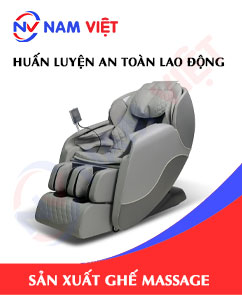
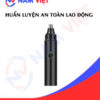
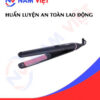




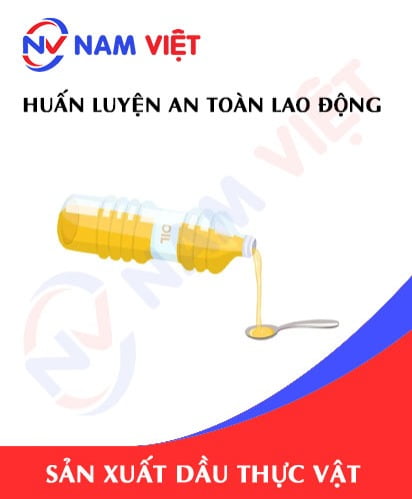




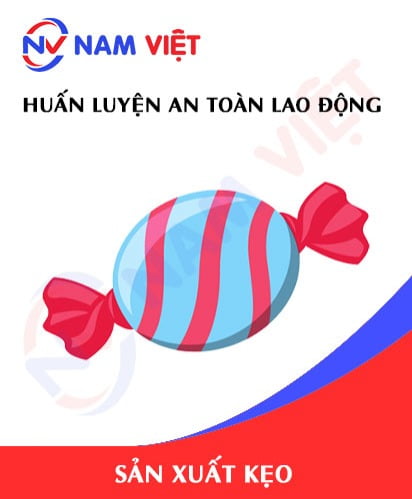

namchinh.haiphong341
Cảm ơn trung tâm! tôi rất hài lòng với dịch vụ